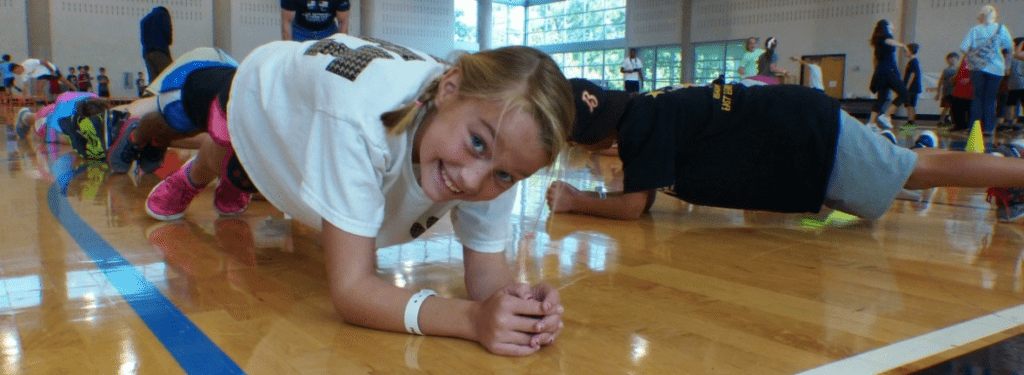By: Alex Martinez
A fitness circuit course is a fun way for students to engage in physical activity. A fitness circuit is an exercise modality in which strength exercises are combined with endurance or aerobic exercises. Circuit courses provide a unique opportunity to improve various fitness components at the same time. Circuits can be set up as stations around the gym, an outdoor field, a playground, or any spacious area. With a little bit of preparation and planning, teachers can set up fitness circuits that are inclusive for ALL types of abilities.

Advantages of using fitness circuits during physical education:
- Minimizes waiting time to participate.
- Provides students with an opportunity to participate with peers in groups.
- Allows students to perform at their own pace.
- Minimizes sedentary time.
- Requires minimal equipment.
- Involves peer tutors.
- Can be utilized as a fitness assessment tool.
- Offers a fun activity.
- Provides circuit training which students may prefer as an alternative to long duration aerobic activity, such as running
Although circuits are very easy to implement, teachers need to plan ahead. To ensure students’ participation and success, the teacher must take into considerations ALL abilities and create adaptations or modifications when necessary.
Considerations when using fitness circuits during physical education:
- Use a safe and spacious area. Remove any hazardous equipment or objects.
- Provide clear instructions for each station.
- Allow students to practice. Start with a smaller circuit and add stations as students become more fit and skillful.
- Use peer tutors in each station, if necessary.An inclusive fitness station poster displayed by a peer tutor
- Use time for each station rather than using a set number of repetitions. This allows the student to perform at his/her own pace.
- Use music and visuals to help students navigate and perform exercise through the course.
- Involve students in designing their own course by asking them to select the music, exercise, and theme.
- Know your students’ fitness capacity and don’t overdo it to the point that technique is compromised.
- Assess how hard the students are working. Incorporate heart rate monitors or Rate of Perceived Exertion (RPE). Note that RPE is not practical for students that don’t have a normal heart rate response to exercise.
- Incorporate themes to the circuit. For example, create a “Superhero Fitness Circuit” and instruct the students to transition from station to station imitating a superhero. Have the class draw superheroes on poster boards with messages of encouragement or feedback and distribute them throughout the circuit.
- Incorporate sports skills into the stations such as bouncing a ball or dribbling a soccer ball.
- Do not repeat the same stations in every circuit.
- Avoid competition between groups or students. Competition should be encouraged within the students themselves.
Inclusive Fitness Stations
NCHPAD’s Inclusive Fitness Stations Posters depict an exercise and its adaptation. These posters can be downloaded at the bottom of this page, printed, and posted in each station to provide the students with a clear visual representation of exercises.


NCHPAD’s Inclusive Fitness Stations Posters include numbers, math symbols, and commands such as start and stop. The numbers can be utilized to illustrate the amount of time needed in each station or the number of the station to represent order. The math symbols can be used to incorporate a multidisciplinary approach such as math problems throughout the course or to stagger the groups start. The commands can be used to designate areas such as start, finish, or resting.
I hope that you find NCHPAD’s Inclusive Fitness Stations Posters useful. Have fun creating inclusive fitness circuits with your students. We encourage you to submit ideas via email to email@nchpad.org of other exercises that you would like to see represented in a poster. You can also send pictures of your inclusive fitness circuits. Stay fit!
